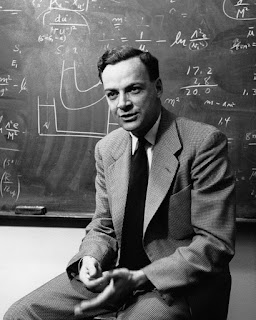>>>> Please excuse the typos and mistakes. This is still a work in progress, but I wanted to share it here first<<<<<
During the first season of my life my great-grandmother played an intricate role in shaping who I was to become. During our times together after school or on the weekends my mom decided she wanted go have a good time with my dad or her friends, she taught me lessons. Some lessons related to the things a child would experience in the school yard and in their daily comings on a goings. Other lessons, when I look back now, were well beyond my experience, but even as a seven year old somehow I understood her perfectly.
By the time I was born most of the grandfathers in my life had either passed away or were in the process of drinking themselves to death. During that time it wasn't much else for black men in Mississippi to do. You would either be worked to death, drank to death or in most cases both. So the closest I ever got to Mama Fancy's other half was an old black and white picture of him proudly standing in front of our house in Easter day. 1958 was the date on the picture, long before my arrival in 1979.
The evening light poured into the living room window casting a hard shadow of the window's checker board pattern. And although dinner was about forty-five minutes ago, the fried chicken's aroma still permeated the front half of the house.
“Is that skillet still burning on the stove?” My grandmother asked.
I my mother hopped up off the couch running into kitchen.
“Yes!” Mom shouted back.
“Shit, I told you to turn that skillet off! Girl, you don't want no grease fire up in here. Them be the hardest ones to put out. And I ain't got no more flour either. I used the last little bit frying that chicken.”
“Sorry Mama. I forgot.” My mom said opening the back door then fanning the air in the kitchen with a damp dish towel.
“Don't be sorry, be careful.” Grandma said. “Make sure nobody mess with that cake before Brenda and Ogdan gets here.
Aunt Brenda and Uncle Ogdan were my mom's older brother and sister. They both had lived in Jackson and had good jobs. My grandmother was always proud of their accomplishments. My mom was the only child to put having kids before getting a college degree. This caused a lot of animosity between her and her older siblings, especially Aunt Brenda.
“Why are they coming here today?”
“Because, we have to talk about mama and the thing that been going on lately.”
A pained look cross my mother's face at this answer. “Mama, don't say that. It's no where near time for that yet. You know how Mama Fancy just likes to talk out of her head sometimes. We shouldn't even be thinking about this.”
“Yes, we should and we is. I remember how it happen to Big Mama and now mama is doing the same stuff. We got to face it head on and make sure what needs to be done is done. I'm sad about it too, but it's only right.”
Uncle Ogdan's laugh could be heard throughout the house. He scooped up huge chunk of chocolate cake onto his fork stuffing it into his mouth. I wondered if there would be any left for the rest of us. My grandmother sat in the corner sipping her signature searing black coffee. I sneak and tried it once while she had her back turned. It took a whole day to get the taste of coffee beans out of my mouth. I still don't drink coffee in any form to this day. My Aunt Brenda sat beside her proudly talking about her new teaching assignment in the biology department at Jackson State University. My mother on the hand, fixed a nice hefty plate for Mama Fancy who preferred to take her meals in her bedroom lately.
The change in Mama Fancy started a month ago. Her conversations grew short and her memory even shorter. She started to obsess over being a burden to all of us. And most troubling, she started talking about the past. First it was the recent past such as fond memories of recently holidays or events. Then it was the distant past, very distant past. She spoke of people and things and places we never heard of or knew existed.
After finally being allowed to have our fill of the delicious chocolate cake, me along with my cousins were sent to my room to play and allow the adults to have their private conversation. However, I was more interested in hearing what they had to say bout Mama Fancy than playing Barbie dream house with my cousin Hannah.
“A choice got to be made soon.” My grandmother said.
“Well, I'm sure everything will work out in it's perfect timing.” Aunt Brenda smiled with confidence. “Don't worry so much mama. This has been done before and it will continue to be done.” She added rubbing grandma's back.
“I know it's been done before” Grandma pulled away from her. “Just this time I don't know if she in her right mind to do it. She barely know where she at half the time. This time, I... I think we gone have to choose it for her.”
“So now you want to take that away from her too?” My mother cut in. “You already treat her like a helpless child! Now, not only do you want to rush the process, you willing to take away her last dignity too.”
“Don't you accuse me of wanting to take nothing.” Grandma hissed. “It got to be done whether she can do it or not.”
“Is all of this really important?” Uncle Ogdan asked. “Can't we just let this end and live like a normal family? You know, try to be normal people who have to deal with normal things. Hell, we might even like it!”
Aunt Brenda nodded in half-hearten agreement. My mother scoffed and rolled her eyes at his absurdity. But Grandma leaned back and sat quietly then said, “You speak like a fool. The more you educated the dumber you get. Don't you get it? What this family got... What she got is more than any college or grad school could ever teach.” She pointed a long, curved shaky finger at my uncle. “If we lose this, we lose everything.”
“Well.” Aunt Brenda looked around at her mother and each of her siblings. “The choice is obvious.” She shrugged.
“Let me guess.” My mother said. “It should be you.”
“Well, yes!” She replied. “I am educated and successful. I can do a lot more with what I already have to offer.”
At this, my mother raised up from the back of her chair. “So you believe education and success and money makes you deserving of it? We was all taught that those things were fleeting. What about the things Mama Fancy taught us, like kindness and character and respect for spiritual things. You barely believe in going to church, Brenda.”
“Stop this.” My grandmother spat. “When the time comes...”
“If!” Mom cut in.
“If and when the time comes, I will do the choosing. We won't mention this no more, for now.”
That night I decided to ask to sleep with Mama Fancy. All the talk about her had me very worried. I needed to be near her. I didn't want to take my eyes off her or leave her side.
“Come on in baby.” Mama Fancy said looking over her should at me. “Close that door all the way so the cool won't get out. The cool night air from the box fan in the window hummed a tune that I knew would soon sing me to sleep. “You can fold that big cover back, baby. The sheet will be all you need tonight. It's been so hot lately, but I feel like Fall is still coming sooner than it did last year.”
“Yes ma'am” I replied. It was a long silence before I said, “They was talking about you tonight.”
“I know.” She replied. “They just worried things won't work out. Yo grandmama always been a worrier, every since she was a child.”
“They said they don't think you can decide.” I snitched. To this she laughed a rough coughing laugh.
“Folks in this family been choosing for a thousand years or more, the choosing ain't about to stop now. If you want the honest truth I don't choose nothing. My job is to assign. God do the choosing.” She said.
“So God gonna choose?” I asked.
“He already did.” She said. “He choose seven years ago.”
Just then the blinding green light illuminated from her eye sockets and nostrils and mouth connecting to mine. Fright poured into me as my body froze in instant suspended animation. And although she didn't physically speak, she spoken to me in thoughts. “Don't be scared, Sadie. This is what's necessary to pass on the knowledge of our family, the things that lay secret in our blood. God showed me it was you. The day you were born I saw the light surround you. We was taken from our home, our land and our people. But it didn't get took from us. We made it we kept it, all of it. We made sure it survive. And now you will too.
A flood of unfamiliar memories spill into my mind. There were memories of my grandmother as a young woman raising a family. Then the memories went back further to when she was just a little girl running around in her father's yard barefoot playing with sticks in the dirt. I even saw the moment that she received the family's legacy. It was her mother who passed it to her.
Then the pictures and sequences further back into time. I saw members of my family on plantations and then sailing to this land chained up in the belly of ships surrounded by blood, bowels, sickness and death. Suddenly we were back in Africa, watching daily tribal life play out when there was peace and freedom and wholeness playing out among the people. There was a shaman who created an elixir to be given to bride who was at least six months pregnant. “This life will not always be. There is trouble ahead and everything you are, know and love you will be stripped away from.” He said. “But with this gift, I can never be stripped away from you.”
The pregnant woman drank the elixir in it's entirety. I saw her thoughts go back deeper than anyone could think humanly possible, all the way back to the beginning of time to the birth of what we consider the universe. And all went black. I fell into a deep comatose sleep among newly birthed stars that were looked upon by my ancient nonhuman ancestors, the ones who were the first and to my recently acquired knowledge, will be the last.
The next morning I awoke to my mother's screams. From that day to my last day I will remember every thing I saw. My mother said at the kitchen table wailing as my held Mama Fancy's body up in a chair to keep it from falling onto the floor. Later, I was told that Mama Fancy awoke early that morning walked into the kitchen (something she hadn't done in over a week), fixed a cup of coffee, happily took several sips and died.
After her funeral members of my immediate and distant family gathered to sort things out. First it was the mundane subjects like money, property and personal belongings. It wasn't long before the subject of the family legacy came up. The collective consensus was that it was lost. Everyone assume Mama Fancy died before she could choose a successor to pass it along to.
Most of family were distraught over the loss. My grandmother's sister Delilah even went so far as to blame her for now caring for Mama Fancy adequately. But there were a few who were relived. I guess they felt that since the great superstition was gone we could now be what society deems as a normal family.
But I knew. I knew it all and felt it and experienced it on a daily basis. Which each new day there was a new lesson for me to learn. I knew download about the history of our people and sometimes the origins of this world. My grandmother passed away the year I turned 23. I last time saw her was that Fall. It was her birthday so I went to visit her in the nursing home.
When my mother and her siblings decided to put her in there, she fell into a state of depression. But with time, she grew accustomed to her new living situation and even started participating in the extra curricular activities. The fishing rodeo was her favorite. However, around the time of her birthday during her second year there her health began to fade.
The strong ointment odor pierced my nostrils before I even stepped into her room. I took my eyes a few seconds to adjust to the dull white light that spilled itself upon the room. Her frail weak hand grasped the crisp what sheet that draped itself across her lower abdomen and legs. “I told you I don't need another sheet. It's hot as it is!” She complained.
“It's me grandma, Sadie.” I said
“Oh hey baby.” She smiled. “I thought you were that new girl. My god, she thinks everyone in here is about to freeze to death.”
“I'm sure she's just trying to do her job.” I said moving across the room to sit in the chair next to her bed.
“Yeah, I reckon so. It's been weeks since anybody came to visit. Your mother and aunt called. But, I have a feeling your Uncle Ogdan will make an appearance since it's my birthday. Yeah, his witch of a wife will allow it, I reckon. She barely wants him to keep up the money I need to stay in this place.” She said turning to face me. “With all his smarts and wit, how did he manage to marry such a woman?” She asked herself more so than me.
“I don't know, grandma. I guess he just... He just fell in love.”
She grinned. “I guess so. That's the only way anybody can explain it I assume.”
I smiled and took her hand in mine. “Is that for me?” She asked finally noticing the small round chocolate cake sitting on the table.
“Yes ma'am.” I replied. “Happy birthday grandma.”
She softly stroked my hand and a serious look appeared on her face. “I always knew it was you.” She said. I opened my mouth to protest, but before I could speak she spoke again. “That morning... The morning she died I was so worried that it was lost.”
“Then you came out of her room. Standing there in your little white gown, I saw the spirit all around. It was in your eyes and I knew that all was not lost and that everything would be alright. She knew too, that's why she didn't worry, because she always knew it was you.”
A week later she made the transition. And although her, along with Mama Fancy and so many others are gone now, I still feel them all around me. I feel their hopes, their fears, dreams and aspirations. Not only can I feel their past, but also their wants for their descendents today. I do not know who will come after me, but whoever it may be, I must remember that all will never be lost.
- END -










